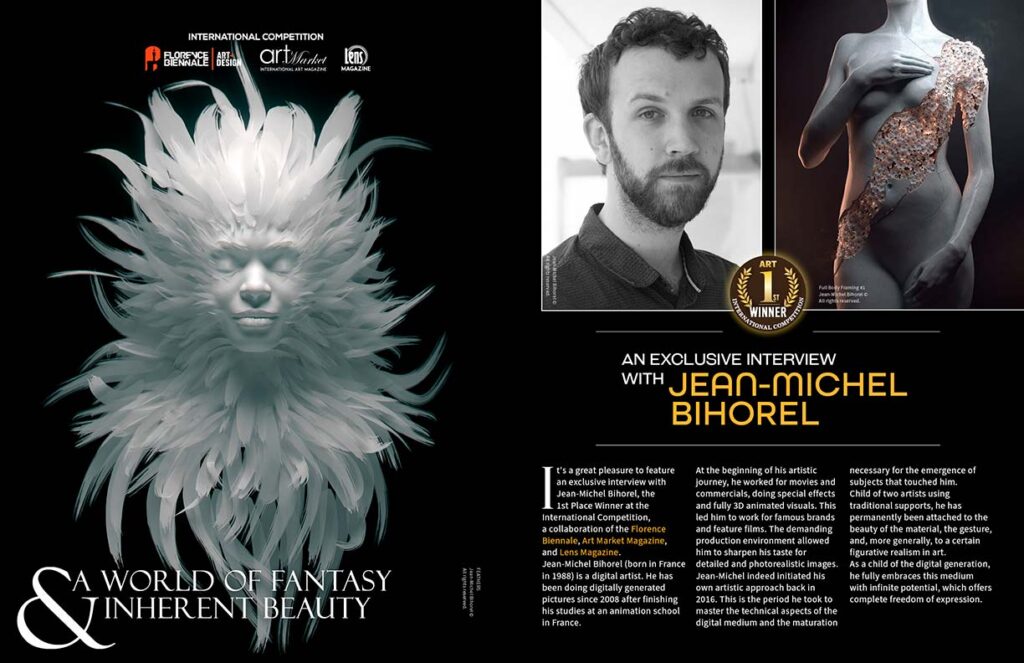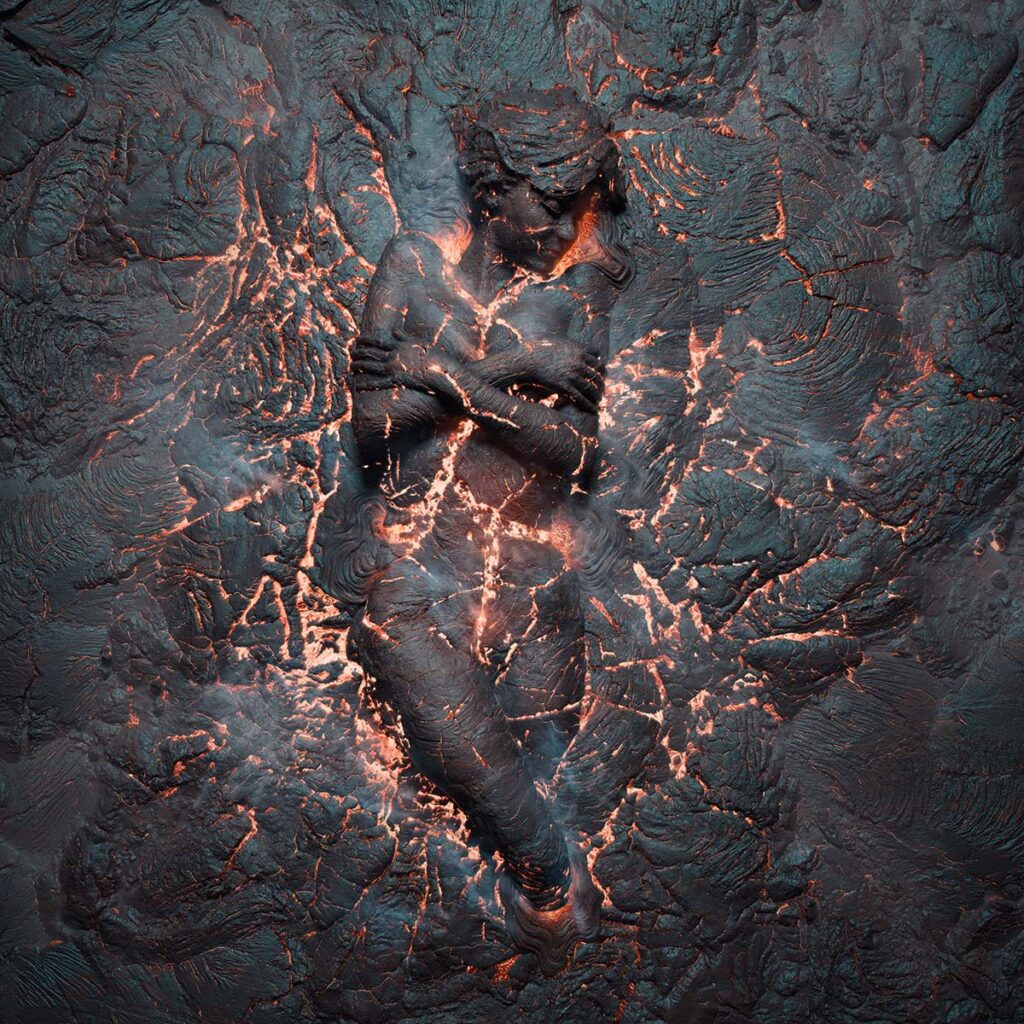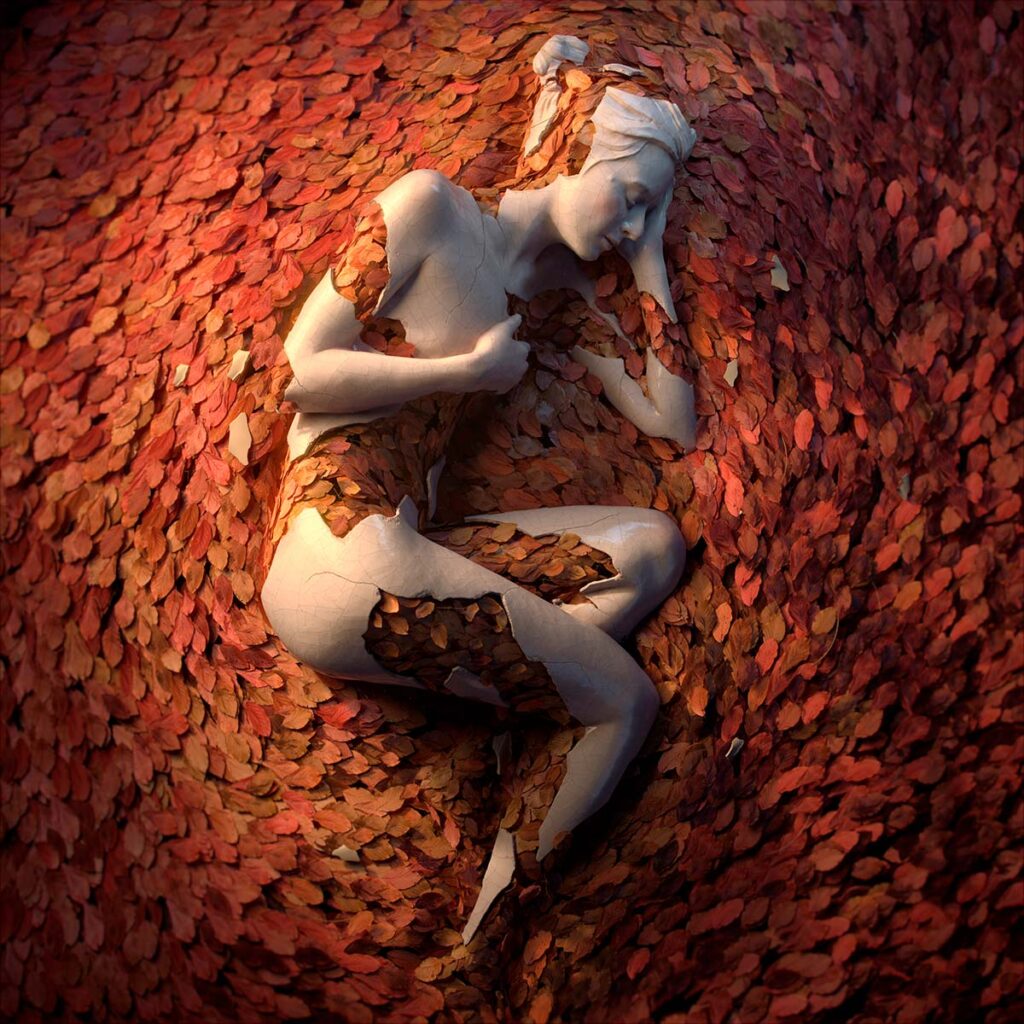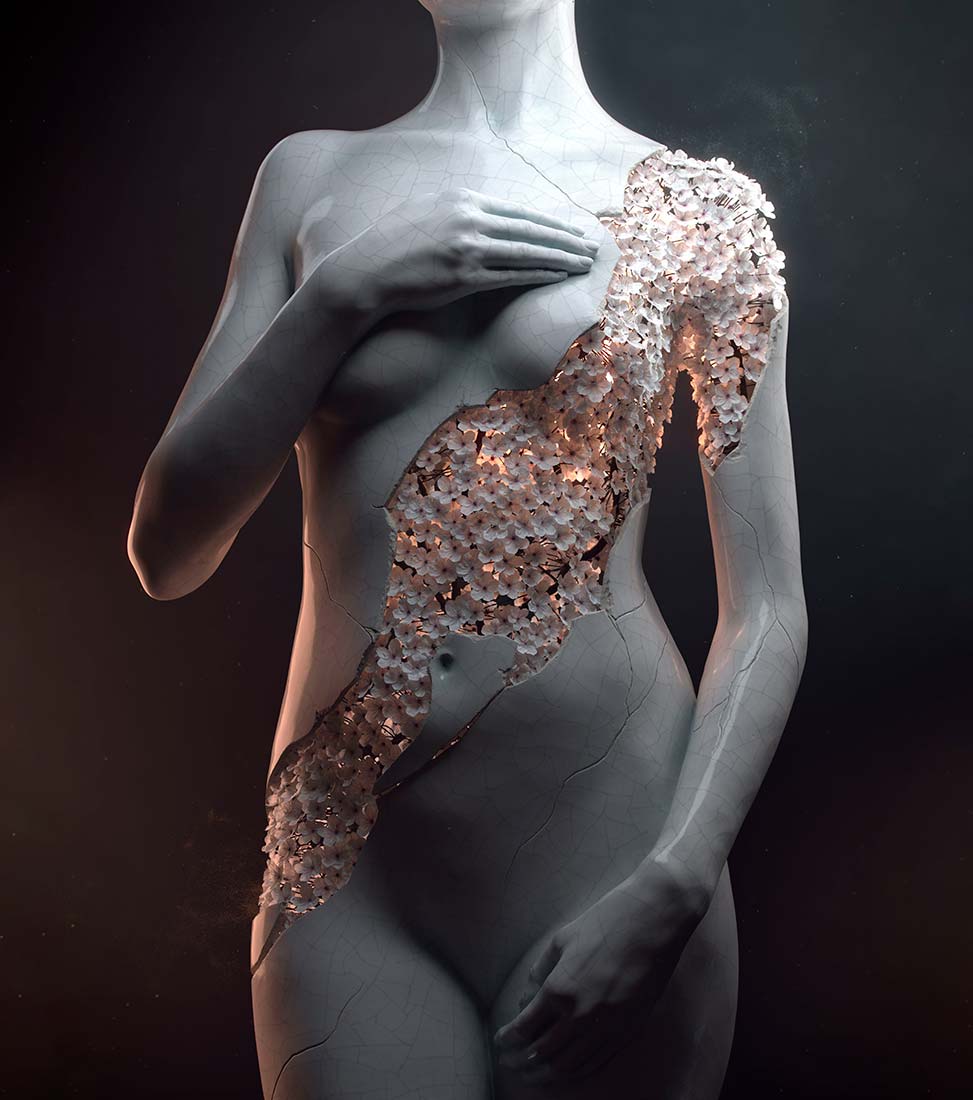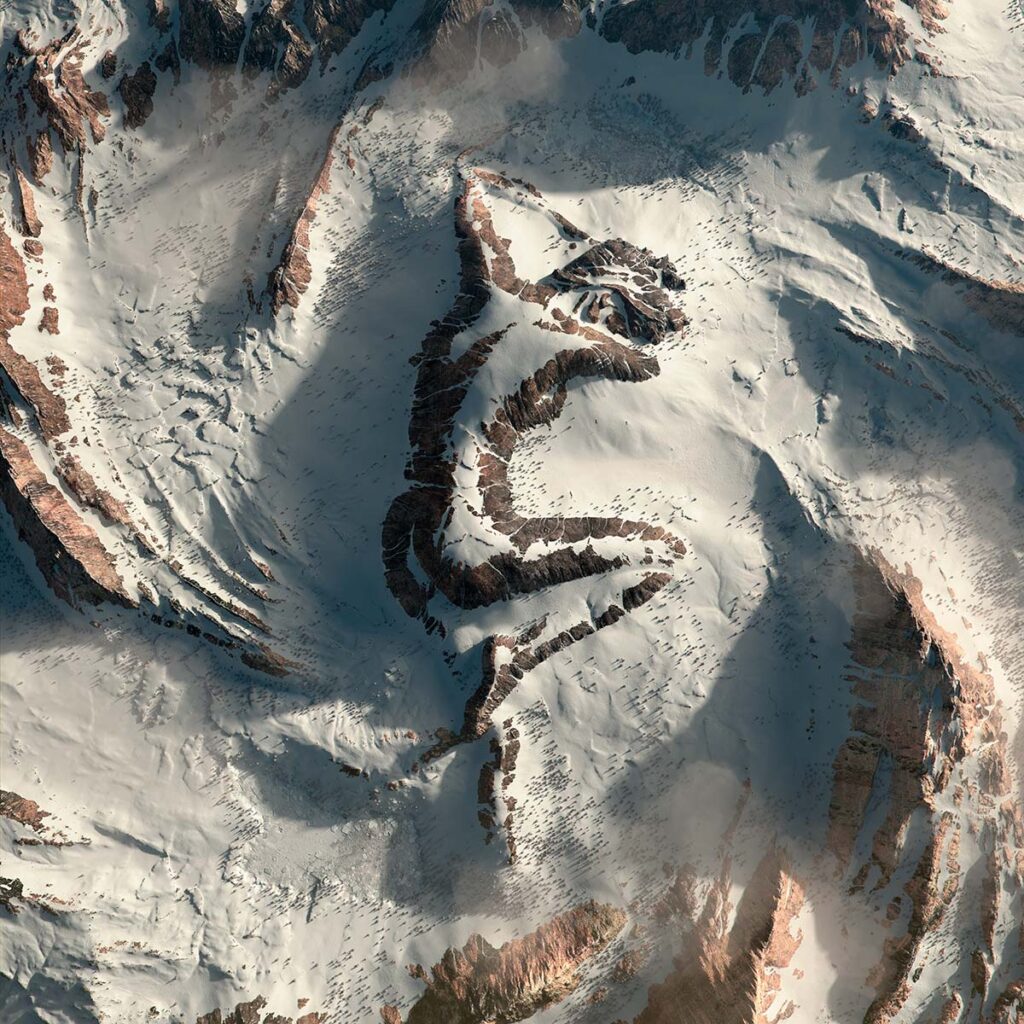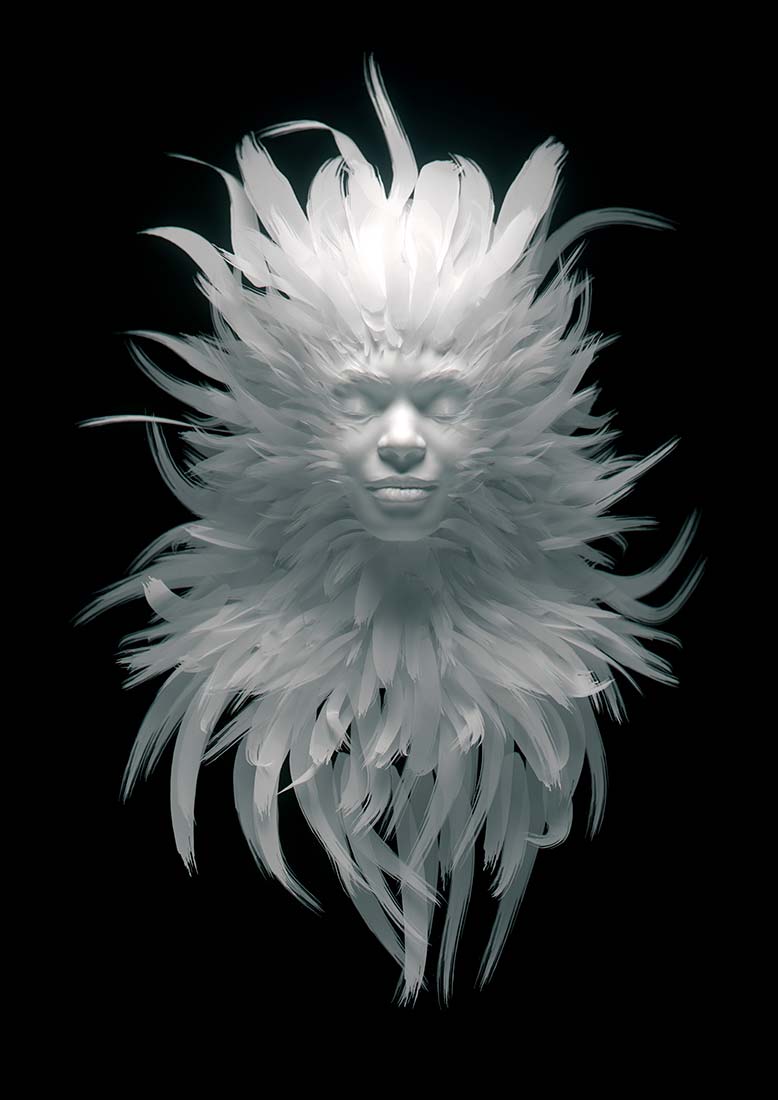

AN EXCLUSIVE INTERVIEW WITH WITH
JEAN-MICHEL BIHOREL
1ST PLACE WINNER | The International Competition | ART
“Finding joy in the creative process is essential, as making a living solely from art can be challenging. If you overthink or try too hard to please others, you might suppress what makes you unique and original.”
It’s a great pleasure to feature an exclusive interview with Jean-Michel Bihorel, the 1st Place Winner at the International Competition, a collaboration of the Florence Biennale, Art Market Magazine, and Lens Magazine.
Jean-Michel Bihorel (born in France in 1988) is a digital artist. He has been doing digitally generated pictures since 2008 after finishing his studies at an animation school in France.
At the beginning of his artistic journey, he worked for movies and commercials, doing special effects and fully 3D animated visuals. This led him to work for famous brands and feature films. The demanding production environment allowed him to sharpen his taste for detailed and photorealistic images.
Jean-Michel indeed initiated his own artistic approach back in 2016. This is the period he took to master the technical aspects of the digital medium and the maturation necessary for the emergence of subjects that touched him.
Child of two artists using traditional supports, he has permanently been attached to the beauty of the material, the gesture, and, more generally, to a certain figurative realism in art. As a child of the digital generation, he fully embraces this medium with infinite potential, which offers complete freedom of expression.
Bihorel always ensures that the digital side of his artworks differs from what characterizes them in the first place. Building a 3D picture requires much technical knowledge and can quickly look dull. So many steps are involved in creating the final picture’s workflow, and the artist must have a clear view of his goals. Also, where most traditional artists try to get perfect control over reality, a digital artist fights against the digital perfection of 3D imagery, always adding some imperfections to get nearer to what makes a subject real and profound. His artistic approach leads him to anchor his images in visual realism.
Jean-Michel aspires to link the contemporary medium and the traditional know-how he was brought up with. This mainly involves reproducing the look of traditional materials and details to give visual plausibility to dreamlike subjects. It also involves engaging with lighting to enhance the perception of the volumes and the different properties of the material to make them almost graspable. Although virtual, his subjects always have an aesthetic that could be described as classic.
With his artworks, Jean-Michel Bihorel always walks on a thin line between classical and supernatural.
“I start an image inspired by things I observe in nature, whether a plant or a rock formation. The human body itself is frequently a source of inspiration.”

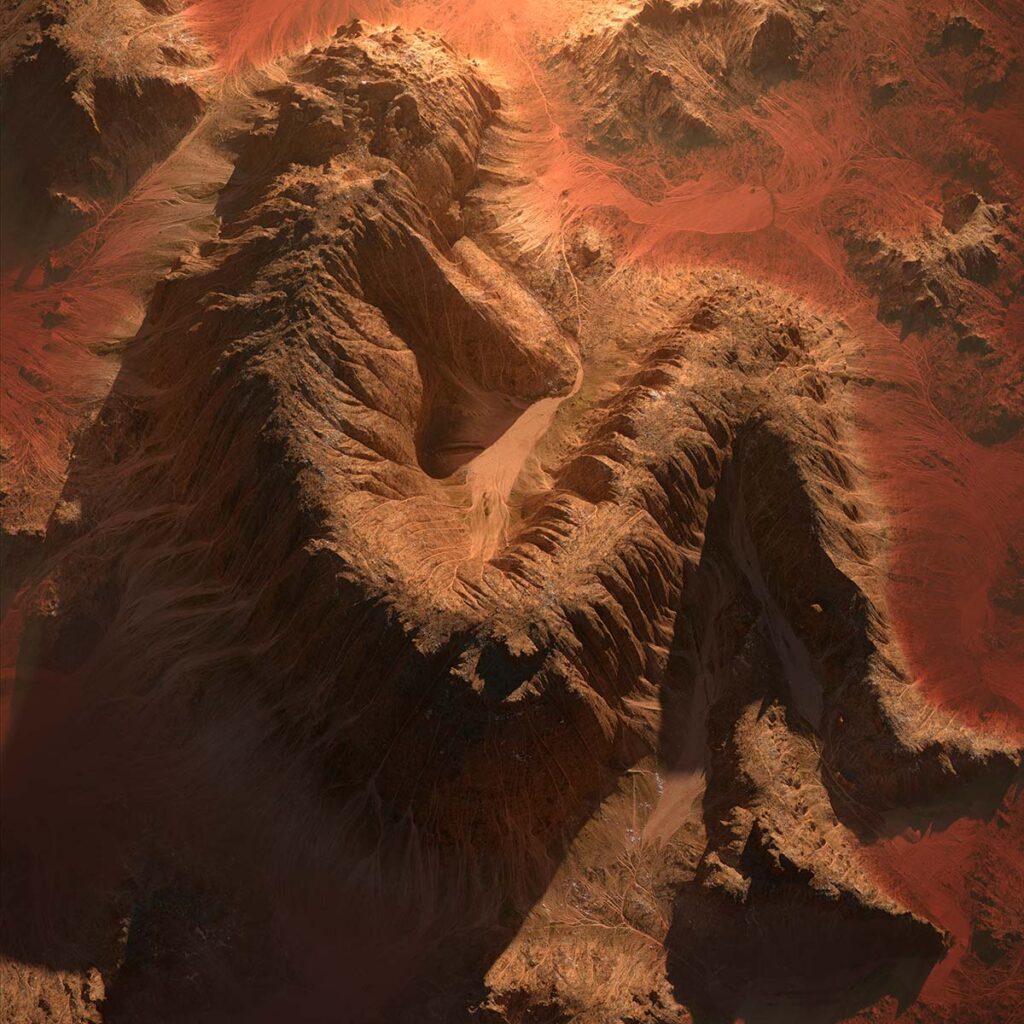
Jean-Michel Bihorel © All rights reserved.
An Exclusive Interview With Jean-Michel Bihorel
| By Ariel SU

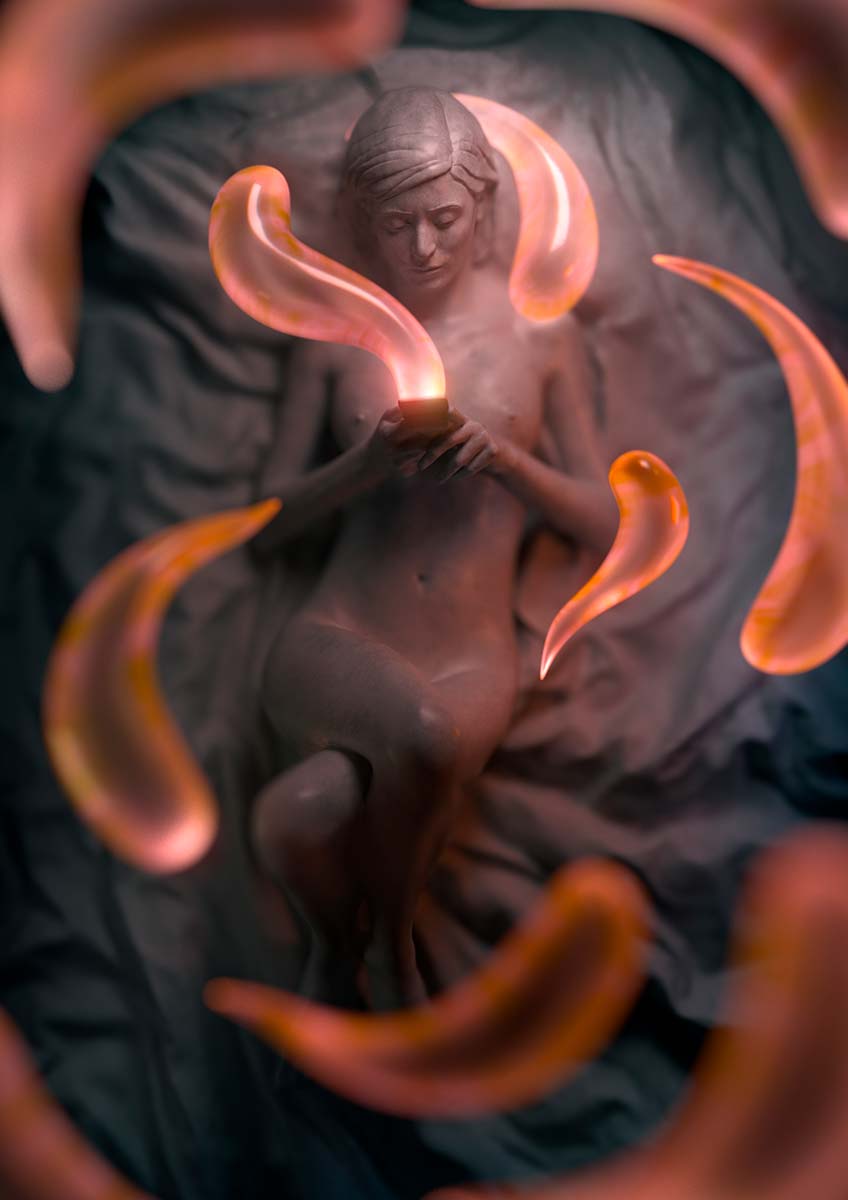
Left: Jean-Michel Bihorel’s portrait. © All rights reserved.
“Creating digital artwork often involves a multidisciplinary approach. The artist must possess knowledge or at least comprehend different fields to achieve the desired result.”
Art Market Magazine: Dear Jean-Michel, Thank you for this interview, and congratulations on winning first place in the international competition. Please share the background of your artistic journey. From a deep search of your artistic knowledge, we understand you grew up in a creative digital environment. Can you tell us more about it? What kind of work did your parents do?
Jean-Michel Bihorel: Many thanks for this interview!
I am delighted to have won first place in this international competition. Let’s discuss a bit about my background and the factors that have brought me here today. Both of my parents are traditional artists. They met at the School of Fine Arts in France, which greatly influenced their artistic paths.
My mother, Sandrine Bihorel Hauquiert, has explored various mediums throughout her artistic career.
In fact, she constantly evolves in her creative expression through different practices and materials. Her work primarily revolves around ornamentation. She often explores motifs inspired by diverse ethnicities, combined with her love for floral ornament. The relationship with materials plays a crucial role in the composition of her artworks. In the early stages of her career, she worked extensively with clay and inks. Today, she focuses on working with textile fibers.
On the other hand, my father, François Bihorel, is a painter who considers himself an “adventurer painter” due to his preference for plein-air painting. He travels the world, always carrying his pencils and brushes. He frequently creates his images in small formats entirely outdoors, from painting to framing, and often exhibits and sells them outdoors throughout his journey. His approach to painting is quite distinct from the traditional studio painter who showcases their works in galleries, although he has also experienced phases of creating in that manner throughout his artistic life. Human interaction and exploring his environment are vital aspects of his creative process. Together, my parents have cultivated a rich artistic atmosphere, they never forced my sisters or me into learning art, but their individual approaches have greatly influenced my own artistic journey.
Art Market Magazine: What benefits did your academic studies give you for creating these 3D artworks, and do you see all your experience in film and commercial work as essential for developing your current artistic style?
Jean-Michel Bihorel: My artistic background isn’t truly academic as I didn’t study fine arts myself. I grew up in an environment where it was easy to experiment with crayons, paint, or clay without formal studies. So, I learned by observing my surroundings, much like a child learns to speak. It was only later that I attended a school that taught computer-generated animation. At that time, the theoretical knowledge revolved more around the history of cinema, rhythm, and framing composition.
Creating 3D images requires a rather laborious learning process involving numerous software programs. It’s like having a brush that takes a few years to master, and even then, it’s just the technical aspect. One still needs to learn how to create beautiful things with that brush once one knows how to use it. Working ten years on advertising, print, and film projects gave me a demanding and highly formative framework. Meeting the expectations of clients and directors exposed me to various techniques and visual styles. Throughout my career as a graphic designer, I have preserved a personal creative expression, which refines itself daily, nourished by the realms of production as much as the world of art.
Today, I also teach computer-generated image creation at a school I co-founded with colleagues. Teaching, research, and creation are three domains that mutually stimulate each other, and I appreciate the balance that this position provides. I believe that a thorough mastery of the tool offers true freedom of expression. In the case of 3D, due to the complexity of the medium, it can take a significant amount of time before one can forget about the tool and focus on the substance, In a way, I have a somewhat academic and traditional approach to image creation. I believe in first mastering the tools and rules before being able to fully express oneself. At least, these are necessary conditions for the type of images I produce.
Art Market Magazine: Is it correct to describe your work as inspiring and empowering the feminine aspect with a unique link to nature?
Jean-Michel Bihorel: Absolutely. I often represent the female body in my artwork. I strive to maintain a sense of modesty and elegance in portraying these bodies. They almost resemble classical painting, but always with a modern twist inherent to my medium. Furthermore, I consistently aim to convey positive emotions. I believe that art can have healing power over the viewer, which is why I endeavor to communicate a message of strength and tenderness. The connection to nature and natural materials feels quite intrinsic when seeking well-being. Incorporating elements inspired by nature in my work allows for a harmonious balance and a sense of grounding. Nature offers an inherent beauty and serenity in the textures, colors, and organic forms. By embracing these aspects, I aim to create artwork that resonates with a more profound sense of tranquility and connection to the world around us. Despite their surreal nature, my images retain realism through the choice of materials and lighting, creating the impression that the subject could have been photographed. This helps the viewer connect with the image’s subject and establish a deeper connection. It’s challenging since anything is possible in 3D, requiring a specific discipline to avoid straying too far from the intended vision.
Art Market Magazine: Let’s talk about your unique technique. Please tell us about the entire work process, from the step of the idea until the final outcome. First, where does the inspiration come from?
Jean-Michel Bihorel: Inspiration can come from various sources. Often, I start an image inspired by things I observe in nature, whether a plant or a rock formation. The human body itself is frequently a source of inspiration.
The beauty of its forms sparks the desire to create images. The visual concept often emerges before the message in my artwork. In fact, I don’t attempt to impose a specific message through my art; instead, I strive to evoke an emotion that will resonate differently with each person viewing the artwork.
As I mentioned earlier, creating computer-generated images requires a solid technical foundation.
Sometimes, discovering a new tool or technique inspires me to explore new artistic territories. It’s akin to a sculptor transitioning from working with marble to working with clay; the new medium opens up new realms of artistic exploration.
The same principle applies to computer-generated art.

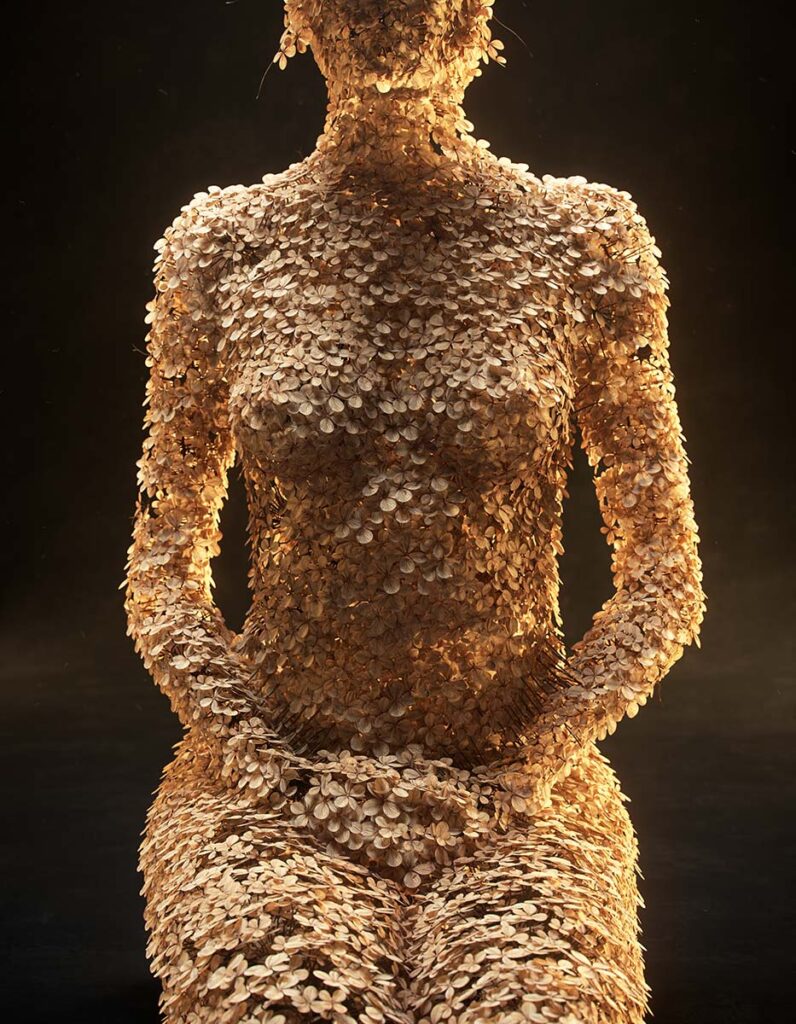
Jean-Michel Bihorel © All rights reserved.
Art Market Magazine: Can you tell us about the workflow? Do you create sketches before starting the work on the main project?
Jean-Michel Bihorel: My creative process varies for almost each of my projects. Sometimes, I envision the image in my mind from the beginning and start building it directly in 3D.
Unlike a sculptor who is bound by the irreversible nature of materials, in 3D, we can construct and deconstruct at will.
This makes 3D tools an excellent tool for conceptualization, just like drawing. I still occasionally create preparatory sketches to brainstorm on paper before embarking on a sculpting task because facing a blank screen can intensify the fear of the blank page. However, capturing the essence of my images in drawings can be challenging as lights and materials often play a significant role in the composition of my images, and experimenting with them in 2D is time-consuming. When I start a project, I usually begin with a photo session with my favorite model. We explore different poses while considering the primary emotion I want to convey. Then, the process of 3D scanning and sculpting of the human subject begins, followed by refining the sculpture through retouching. Next, I work on creating the environment surrounding the subject. After that, I focus on creating the materials and lighting the final image.
Art Market Magazine: What software do you use for your work? What is the importance of post-processing in your art?
Jean-Michel Bihorel: I use more than ten different software to create my pictures. From sculpting software to texturing and then lighting software. I don’t want to submerge you with a list of technical stuff, but I can name a few (Capturing Reality, Zbrush, Substance Painter, Maya, Houdini, Guerilla Render, Nuke, Photoshop…).
I don’t think the term post-processing applies in my case because the image is completely created digitally. The post process is actually the whole process in my case! For someone without experience in computer-generated images, you can picture a sculpting workshop inside the computer.
I start by sculpting an actual 3D model around which I can turn a camera. Then I paint color and physical properties to make it look like wood, ceramic, or metal. Then I can place lights as if I was on a stage. I chose a camera angle and shoot my pictures or film and create an animation.
Creating digital artwork often involves a multidisciplinary approach. The artist must possess knowledge or at least comprehend different fields to achieve the desired result. This may include understanding concepts from sculpture, painting, photography, lighting design, composition, and even storytelling.
By incorporating these various elements, the digital artist can effectively create a cohesive and impactful final image that communicates their artistic vision. In a way, the digital artist becomes a conductor, orchestrating and harmonizing these different disciplines to create a unified and compelling visual experience.
Art Market Magazine: How long does it take to reach the final outcome? Do you always get your goals? Does the result fit perfectly with the first idea that came to your mind in the first place?
Jean-Michel Bihorel: The production time for my projects can vary from a few days to several months, depending on the complexity of the subject matter. It can truly be exponential. When working on personal projects, I grant myself a considerable amount of artistic freedom. While I do impose a certain level of discipline to persevere and give my initial idea a chance to come to life, there are times during the project when I stumble upon an entirely new direction that proves to be far more interesting than what I had envisioned originally. In such cases, I allow the artwork to guide me and embrace what works best. I believe that the creative process should be enjoyable in and of itself, as it directly influences the ability of the generated image to convey that very sensation.
Indeed, there are times when I begin an image without a precise final outcome in mind. With the advancement of 3D tools, they now offer real-time interaction with the artwork, allowing for experimentation akin to how a traditional artist would play with materials or lighting without necessarily being able to predict what will work best. In these situations, the artist becomes an arbiter of randomness, deciding to capture a particular moment or situation encountered during the creative process. The artist embraces the fluidity and spontaneity of the medium, making choices that freeze a specific iteration of the artwork at a given moment. It’s an exciting and dynamic approach that enables exploration and discovery throughout the artistic journey.
Art Market Magazine: From your personal journey in the art field, what will be your advice to the young artist looking for a way of development?
Jean-Michel Bihorel: It’s a challenging question because the motivation of each artist emerges for very different reasons.
I believe finding joy in the creative process is essential, as making a living solely from art can be quite challenging. If you overthink or try too hard to please others, you might suppress what makes you unique and original. Yet, precisely this uniqueness will be your pathway to success. In my case, I chose not to depend on my artistic endeavors as a primary source of income because I didn’t want the pressure of making money to interfere with my creative process. Although I have seen my parents successfully combine both aspects throughout their artistic careers, I have also witnessed the challenges it can entail.
Gradually, as I reach a sufficient level of artistic maturity, I may earn a living from my art. However, once again, it will always be vital for me to create images primarily for the pleasure it brings. Money should never be the driving force behind my creative endeavors. The intrinsic joy and fulfillment derived from the act of creation itself remain my guiding principles.
Art Market Magazine: What is your opinion regarding AI? Many artists are exploring this field and selling their artworks made by an AI app. Did you use AI in your works of art?
Jean-Michel Bihorel: It’s the big topic of the moment. Personally, I don’t use AI as a tool for direct creation. AI has been trained on the work of a multitude of artists who have spent their lives exploring artistic paths, so it looks pretty unethical to use the direct output of what an AI produces.
That being said, it is evident that people will use this tool. And if anyone can create an image of good quality by simply writing a few sentences, it becomes clear that the primary interest of these individuals’ works will lie in the message they seek to convey rather than the visual quality of the image, as anyone can reach that technical level.
However, all the tests I have conducted with AI to try and recreate some of my artworks have been quite disappointing. The AI was unable to recreate my images. Perhaps I am not a good “prompt artist,” but I have the impression that if the concepts we are trying to blend are too complex, the AI struggles to compose them precisely and harmoniously, at least for now…
It could likely succeed if it were possible to have a more extensive dialogue with the AI that generates images to provide a more specific understanding of what we are trying to create. The field is advancing so rapidly that it is difficult to predict the next revolution.
Using AI to verify whether our idea is not cliché can be pretty amusing. If the AI easily produces an image that aligns with what we have in mind by describing our idea in a few words, it means that the internet is already filled with images of that kind, and it might be better to explore other, more original directions!
That being said, I fully translated this interview from French to English using artificial intelligence, controlling the outcome and making small modifications here and there. AI is a new tool that is here to stay, and we need to find the right ways to use it without losing what makes us unique.
Art Market Magazine: This October, your work will be presented on mass media boards across Florence and exhibited at the XIV Florence Biennale respectable art event. Are you excited about this massive exposure? What’s the future hold? Any other special exhibitions in the upcoming months?
Jean-Michel Bihorel: An artwork is meant to be seen, from my point of view. This opportunity to showcase my work to a broad audience is fascinating. I am curious to see the encounters that it will generate. I also look forward to meeting the other artists at the Florence Biennale.
I have two other exhibitions scheduled in the near future. One is titled “Art Theorema #3” and will take place at the “Gallerie delle Prigioni” in Treviso.
The other one will be held at the “Swiss Icon Museum” and present my work juxtaposed with religious icons.
I love this idea because artists of that era had to exert extra effort to express themselves within the confines of these highly codified images. I also like to think that my artwork has a solemn and timeless aspect, so the connection is quite flattering to my artist’s ego!

